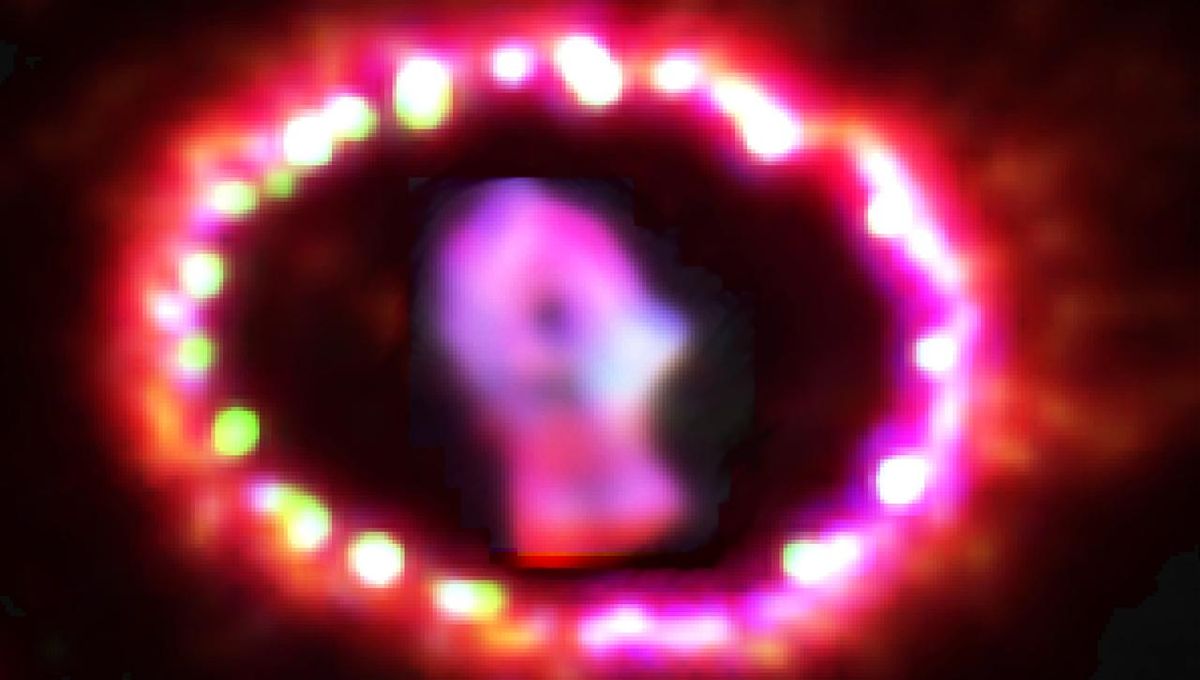
Two of Earth’s five confirmed mass extinction events could have been caused by nearby supernova explosions stripping the planet’s ozone layer, a new study argues. Although the explanation has been proposed before, this work provides more rigorous evidence that the idea is plausible.
ADVERTISEMENT
The rate of animal and plant extinction has jumped well above background levels many times during Earth’s history, but (at least) five of these stand out for the number of species that disappeared from the fossil record. The last one is the most famous for the loss of the non-avian dinosaurs, but it’s also the only one where a suitably-aged crater exists. Therefore, alternative explanations need to be found for the other four. We are particularly lacking explanations for the Late Devonian and late Ordovician events.
No direct evidence is available to implicate supernovae in any of these. Such explosions produce an excess of certain radioactive isotopes that get buried in sediments from the time. Spikes in these isotopes have been tentatively linked to biological changes on Earth, but only in relatively recent times.
By definition, radioactive elements deplete in abundance with time. The Devonian mass extinction event was 372 million years ago million years ago, and the Orodivician was 73 million years earlier. Isotopes like iron-60 have too short a half-life for us to detect any from events that far back.
The closest thing we have to an accepted cause for these events is that both coincided with extensive glaciation. One potential trigger for that is the drastic depletion of the ozone layer, which could be caused by a nearby supernova explosion, although debate remains about just how close it would need to be. New research provides reasons to take that seriously.
That conclusion doesn’t come from a search primarily directed at investigating extinction events. Instead, the authors conducted a census of O and B-type stars within a kiloparsec (3,260 light years) of the Sun, finding just under 25,000, although there is some uncertainty about the precise distances of those at the outer edge. The census is useful for understanding the development of the galaxy and the shape of its spiral arms.
However, it also offers a way to calculate the frequency of supernovae. Extrapolating to the entire Milky Way, the authors get an estimate of 0.4-0.5 per century. “These are slightly lower than previous estimates, which we attribute to improvements in our census of OB stars and changes to evolutionary models,” they write.
ADVERTISEMENT
As an aside, this helps explain why we haven’t observed a supernova in our galaxy since the invention of the telescope more than 400 years ago, something considered quite unlucky with the previous higher estimates.
The authors also turned their work to the mass extinction question.
“We calculated the supernova rate close to Earth and found it to be consistent with the rate of mass extinction events on our planet that have been linked to external forces such as supernovae,” Dr Nick Wright of Keele University said in a statement.
Using 65 light years as the danger zone, Wright and co-authors’ estimated rate comes out at an average of around once every 400 million years or so.
ADVERTISEMENT
With five confirmed mass extinctions over a little longer than that, it’s very unlikely all would be from supernovae, but of course, we already have an explanation for one, and some strong hints on another.
A case has previously been made for the Devonian to have had a supernova cause, complicated by the fact there appear to have been two late Devonian extinction events, 10 million years apart.
The late Ordovician event is even more murky, but with a predicted ratio of 1-2 extinction-causing explosions over the roughly 500 million years, the fossil record is continuous enough to reveal such events, and it comes into the picture as well.
A mix of gamma and X-rays from a supernova would probably destroy Earth’s ozone layer, if the explosion was close enough, letting in an excess of ultraviolet light. This would kill many organisms at the base of the food chain, setting off a wave of starvation, as well as causing mutations and cancers among others. Ongoing increased cosmic rays would slow recovery.
ADVERTISEMENT
The link to glaciation is less obvious, but ozone can warm or cool the planet depending on altitude, and the net effect of its destruction by non-chemical means could send the Earth into an Ice Age. There are more earthly possible explanations to be considered as well, however, so the case is far from clear.
We haven’t found any neutron stars or black holes – the objects that supernovae leave behind – close enough to Earth to have been candidates. However, the different paths stars take around the galaxy mean the remains of a supernova that exploded near us hundreds of millions of years ago could be thousands of light years away by now.
The study has been accepted for publication in Monthly Notices of the Royal Astronomical Society, preprint available at arXiv.org.
Source Link: Supernovae Blamed For 2 Of Earth’s Mass Extinctions, The Devonian And Ordovician